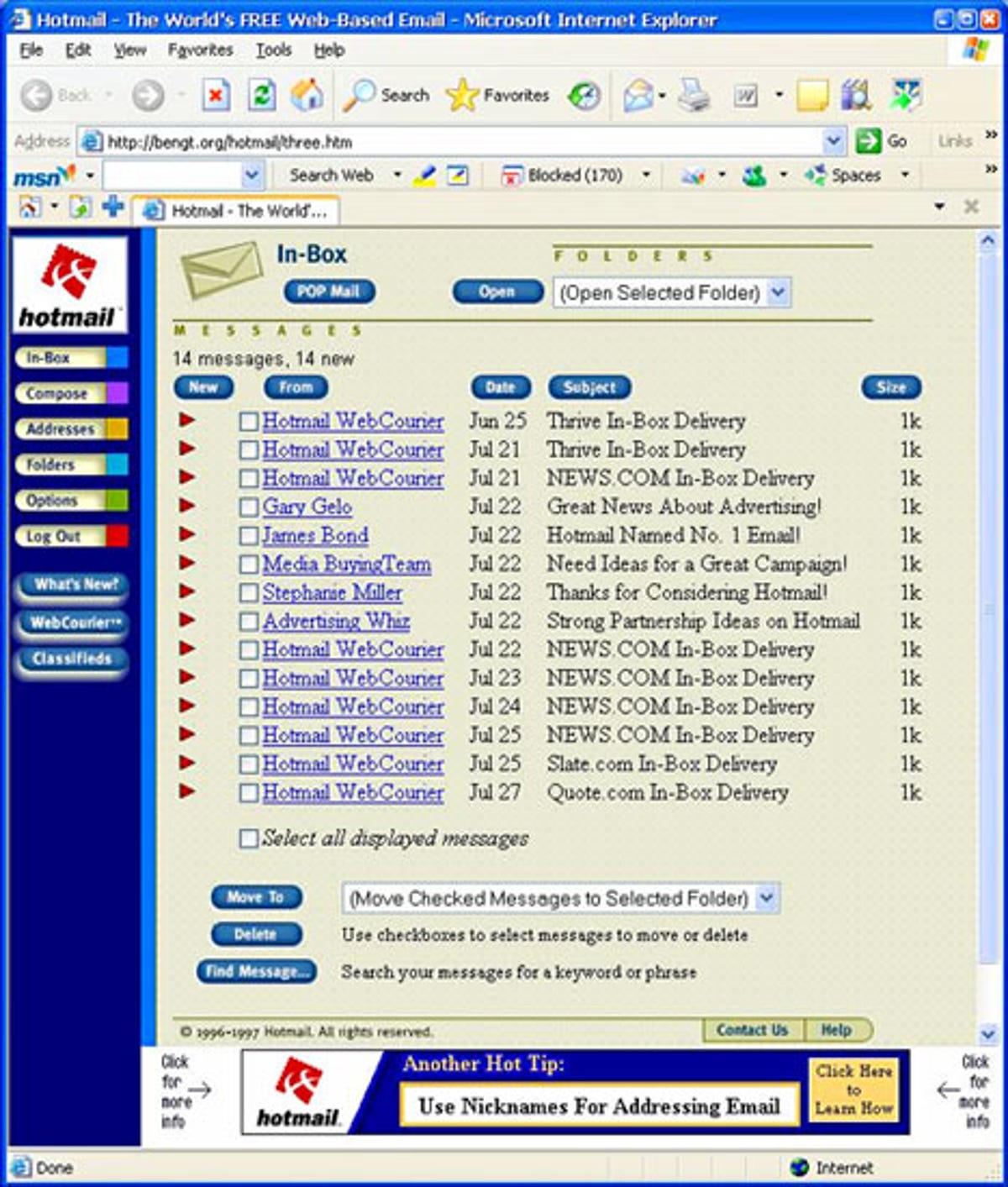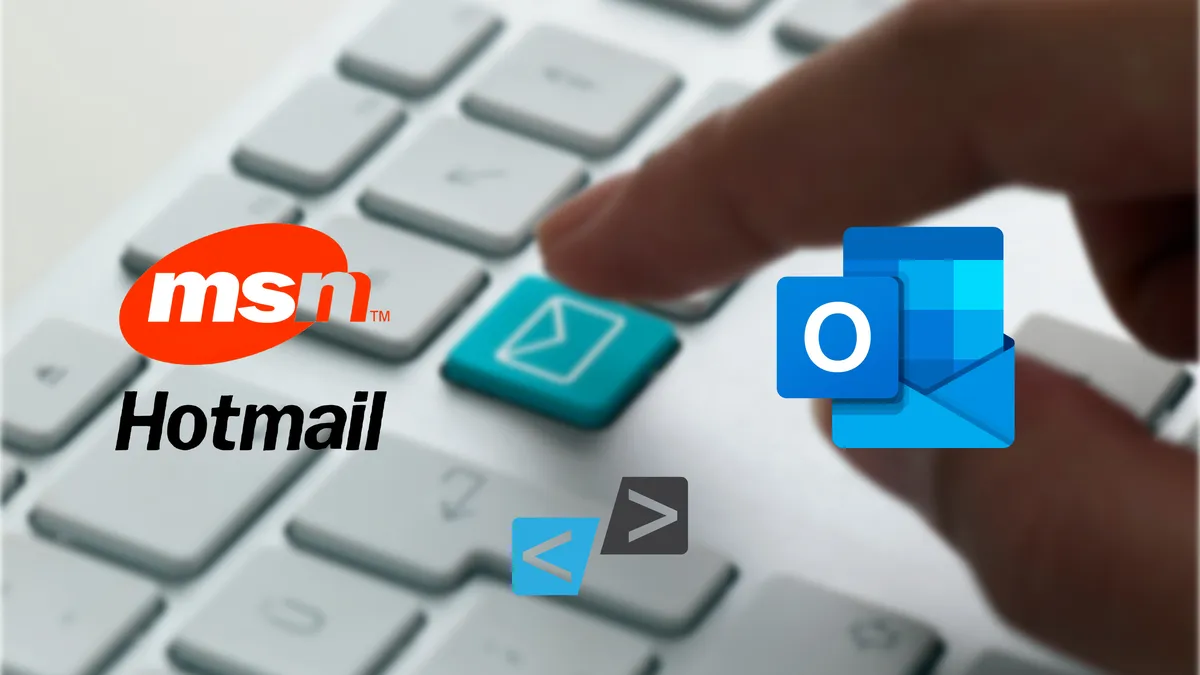MSN Hotmail: From Dorm Room to Global Inbox (1996-2013)
Let’s take a trip back in time to the early days of the internet with Hotmail! We’ll explore how MSN Hotmail started as a simple idea and quickly became the world’s most popular email service. We’ll chat about the cool stuff it could do (back in the day) and how it eventually became the Outlook.com you know today.
In the pre-smartphone era, a dial-up modem’s screech and the anticipation of a blinking cursor were the gateway to a whole new world of communication. And at the forefront of this revolution stood MSN Hotmail, a name synonymous with free email and a defining force in the rise of the digital age. This article is a nostalgic plunge into the history of Hotmail, exploring its meteoric rise, impactful features, and eventual transformation into the modern email giant, Outlook.com.
From Dorm Room Idea to Internet Phenomenon:
The story of Hotmail begins in 1995, a time when dial-up internet was still a novelty. Two Stanford University graduate students, Sabeer Bhatia and Jack Smith, dreamt of creating an email service accessible to everyone.
Back then, email accounts were often limited to universities and workplaces, requiring hefty fees and cumbersome software installations.
Bhatia and Smith envisioned a service that was free, web-based, and user-friendly, accessible from any computer with an internet connection.
Also see:
Their idea culminated in Hotmail, launched in 1996 with a revolutionary feature: 2MB of free storage. This was a staggering amount at the time, compared to the paltry kilobytes offered by competitors.
Hotmail’s generous storage space allowed users to store photos, documents, and even music files, making it more than just an email service but a true online hub.
The name “Hotmail” itself was a clever play on the word “hotmail.com,” chosen for its memorability and ease of pronunciation.
Their marketing campaign was equally bold, employing guerilla tactics like sending mass emails with the tagline “Get Your Free Email at Hotmail” attached to every outgoing message. This viral approach, combined with the service’s undeniable value, propelled Hotmail to instant fame.
Microsoft Enters the Picture
- Acquisition: Microsoft acquired Hotmail in December 1997 for an estimated $400 million.
- MSN Integration: Hotmail was rebranded as “MSN Hotmail” and became a key part of the Microsoft Network (MSN) suite of web services.
Key Innovations:
- Storage Space: At a time when email storage was very limited, Hotmail offered generous amounts of space for free.
- Spam Filtering: It was among the first to implement spam filtering features to combat junk emails.
Evolution and Transition
- Windows Live: In 2005/2006, MSN Hotmail became “Windows Live Hotmail” as part of Microsoft’s rebranding push.
- The Outlook Era: Finally in 2013, Hotmail was completely replaced by Outlook.com, featuring a modern interface and tighter integration with other Microsoft services.
Legacy
MSN Hotmail played a pivotal role in popularizing web-based email and setting the stage for the advanced email services we have today.
A Free Email for the Masses:
Hotmail’s success wasn’t just about its free storage. The service boasted a user-friendly interface, accessible from any browser, and features like spell checking and virus scanning that were still novelties in 1996. Unlike its competitors, Hotmail required no software downloads or complex configurations, making it truly accessible to even the most tech-averse users.

This accessibility opened the doors of email communication to millions who had never used it before. Families, friends, and businesses embraced the convenience of Hotmail, fostering connections across geographical boundaries and revolutionizing the way we communicate. Hotmail became a household name, synonymous with the very concept of “email.”
Microsoft Acquisition and the Rise of Windows Live Hotmail:
In 1997, Microsoft, recognizing the potential of Hotmail, acquired the service for a staggering $400 million. This marked a significant turning point for Hotmail, integrating it into the Microsoft ecosystem and exposing it to an even wider audience.
The integration led to the launch of Windows Live Hotmail in 2007, a revamped version that boasted improved security, spam filtering, and integration with other Microsoft services like Messenger and SkyDrive.
Windows Live Hotmail further solidified Hotmail’s position as a leading email service, catering to the needs of both personal and professional users.
The Dawn of Outlook.com and the End of an Era:
In 2012, Microsoft announced the unification of its email services under the banner of Outlook.com. Hotmail, as a standalone service, was phased out, with existing users automatically transitioned to the new platform.
The transition to Outlook.com marked the end of the Hotmail era, but its legacy lived on. Outlook.com inherited Hotmail’s core principles of free, user-friendly email and further expanded its functionalities with features like cloud storage, advanced search, and calendar integration.
A Legacy of Democratization and Connection:
MSN Hotmail’s impact on the world of email cannot be overstated. It democratized communication, making email accessible to millions who had previously been excluded.
Its free, web-based approach paved the way for other webmail services and instilled a culture of online communication that continues to shape our lives today.
Hotmail’s story is more than just a technological innovation; it’s a testament to the power of human ingenuity and the transformative potential of the internet.
It’s a reminder that even the simplest ideas, born in a dorm room, can change the world, forever etching their name in the annals of digital history.
This article is just a glimpse into the fascinating history of MSN Hotmail. If you have any personal memories or experiences with Hotmail, feel free to share them in the comments below.
